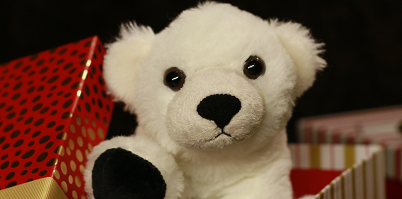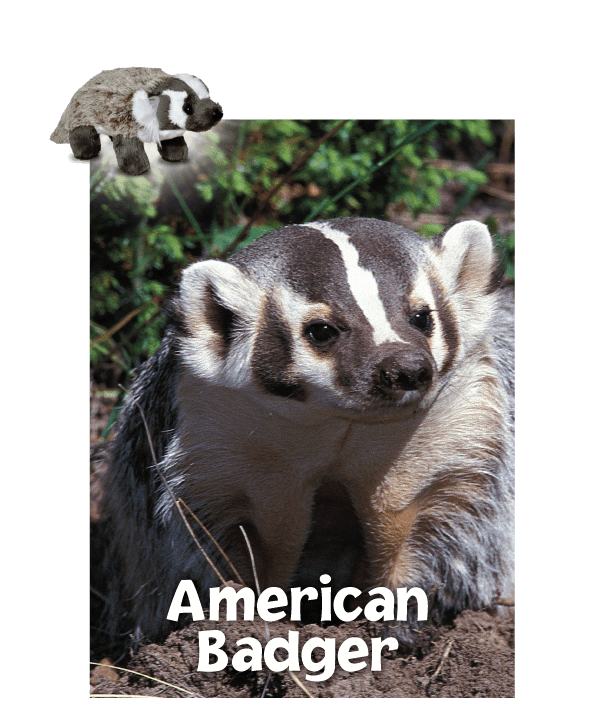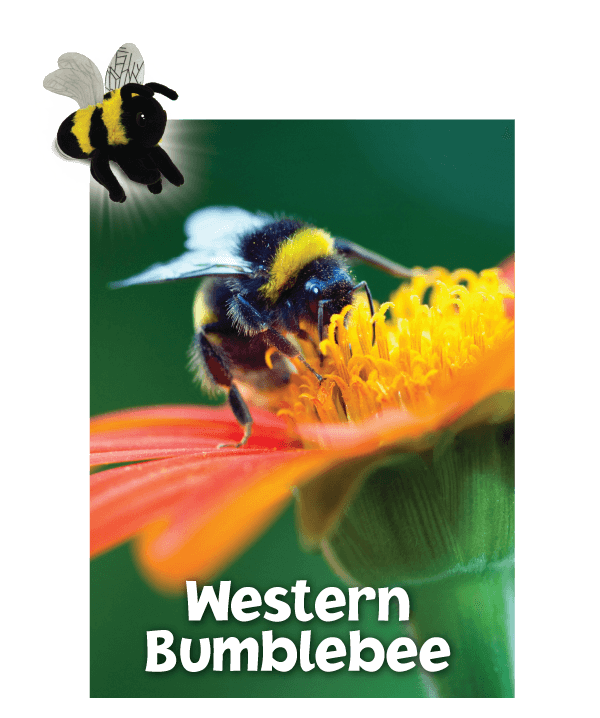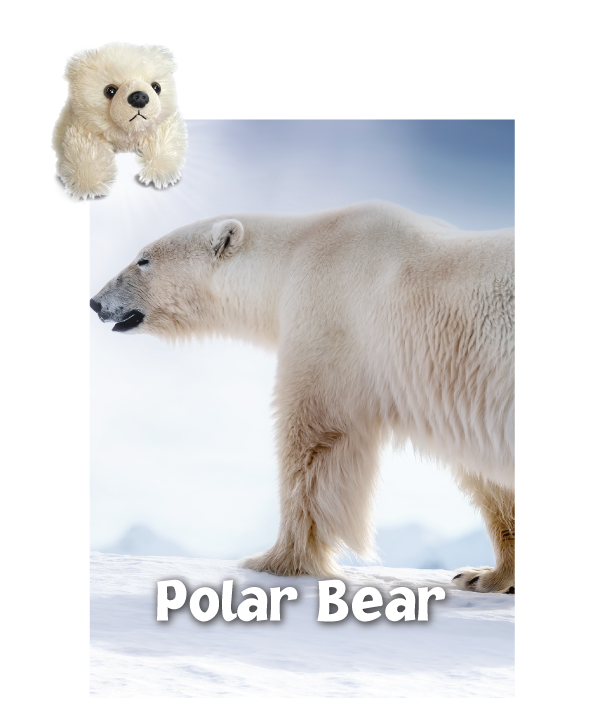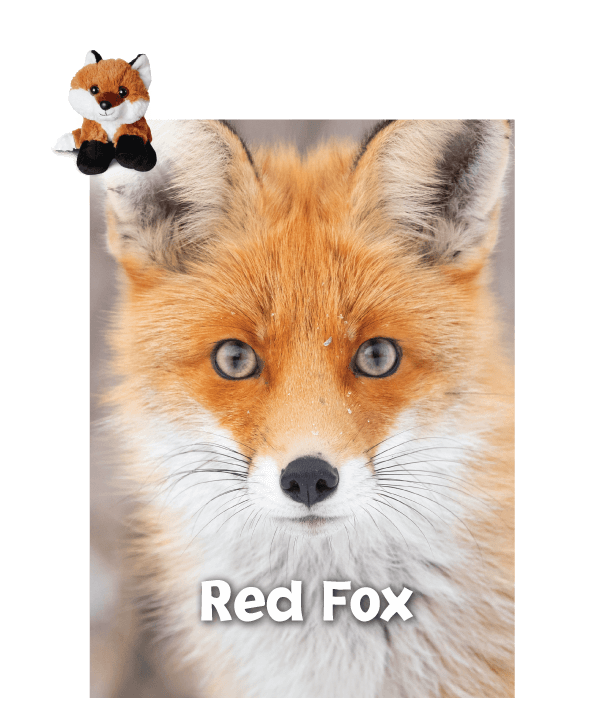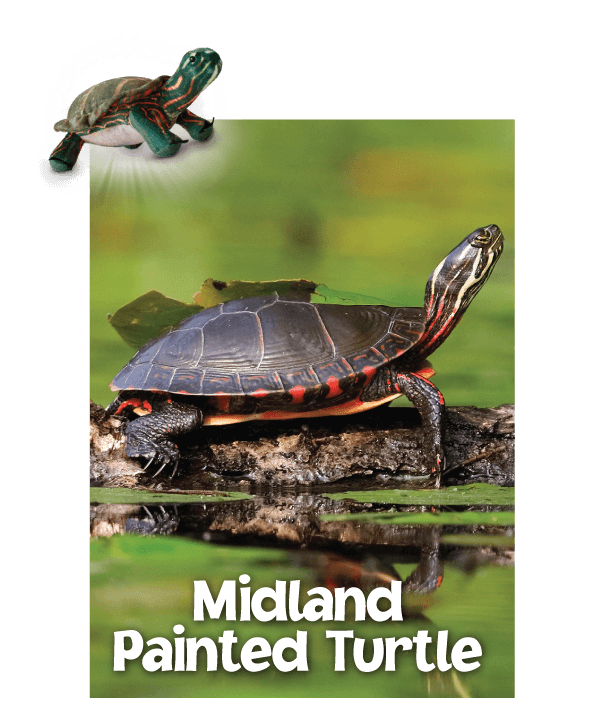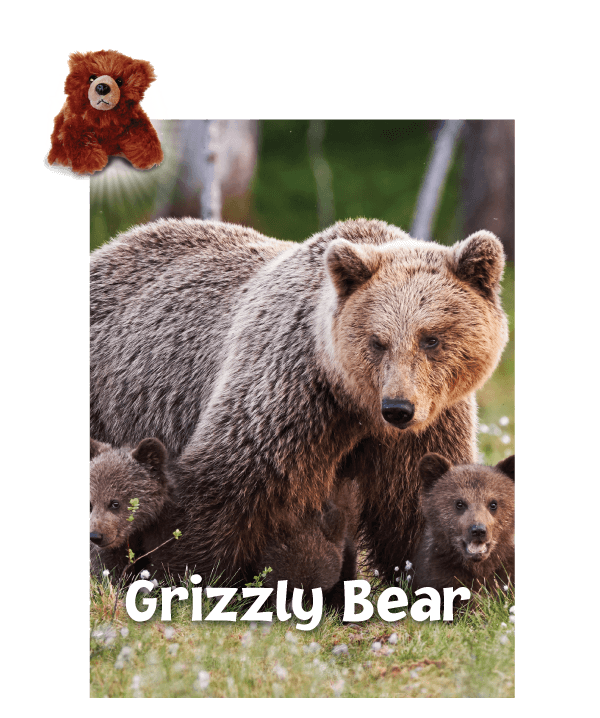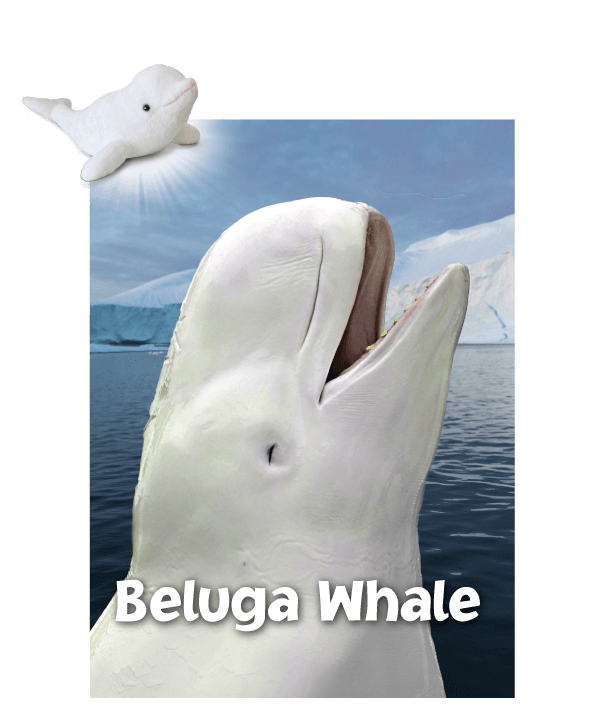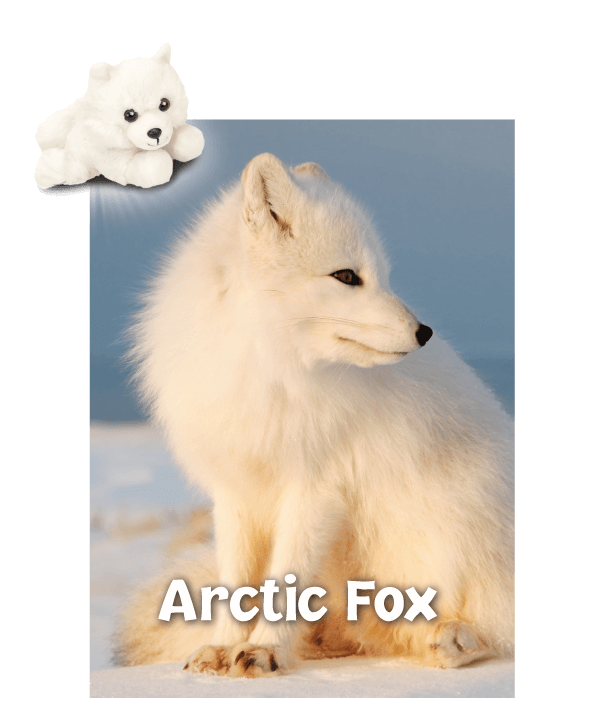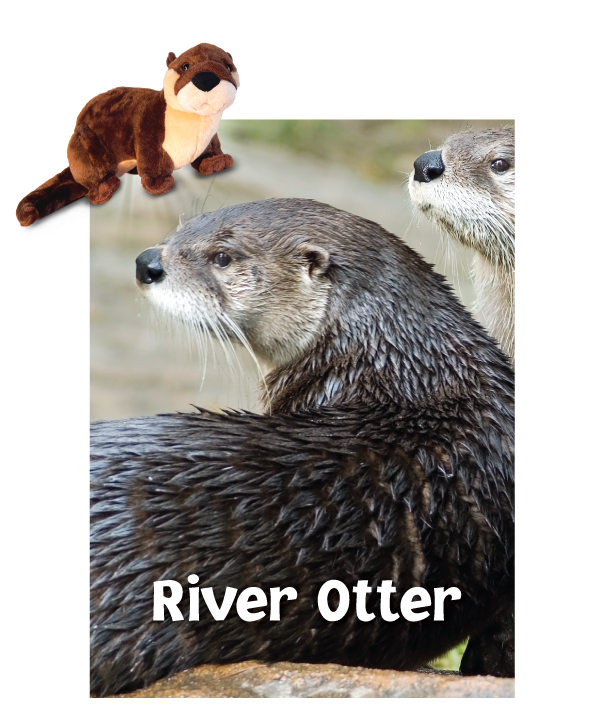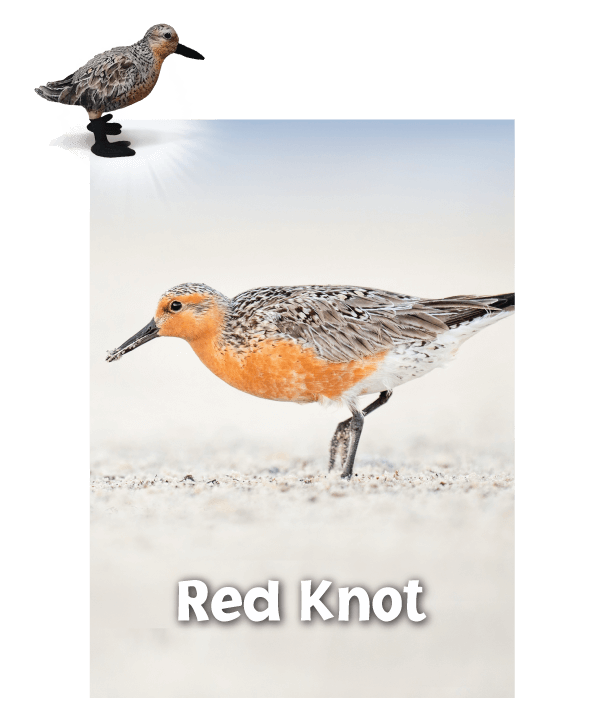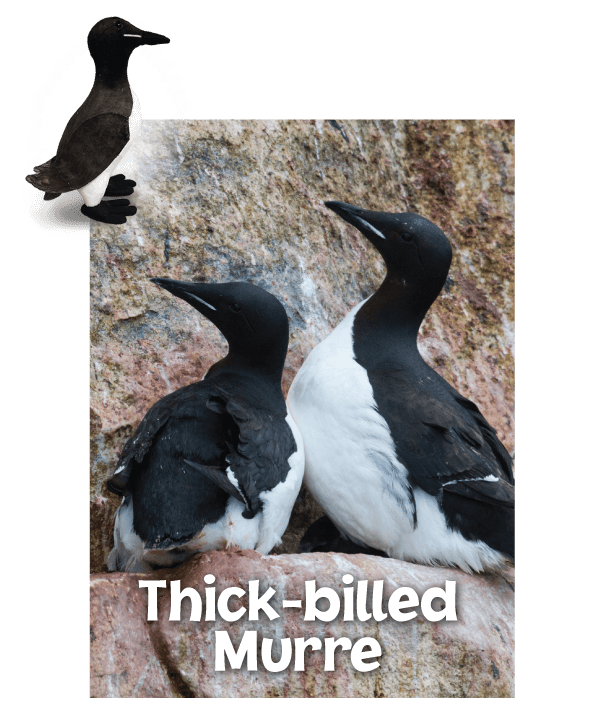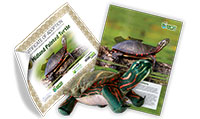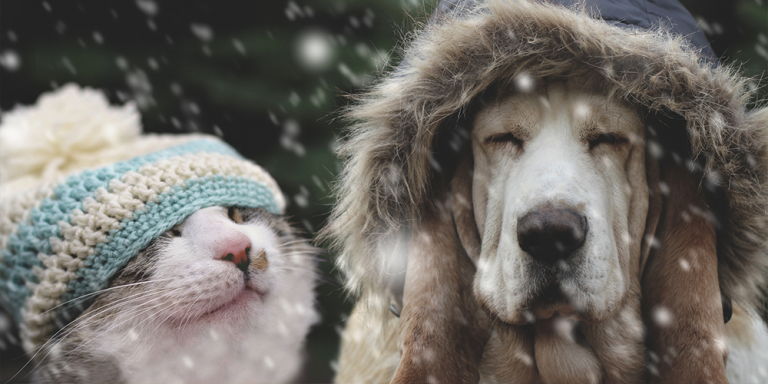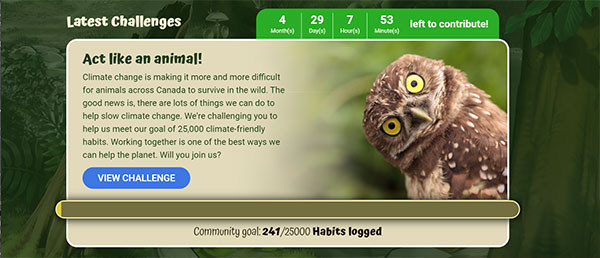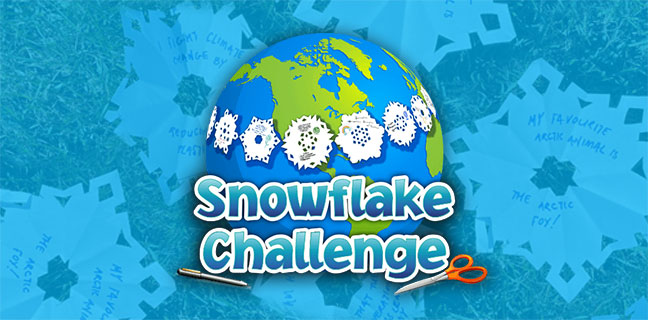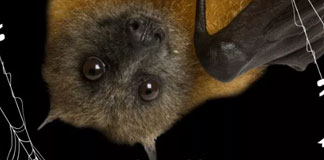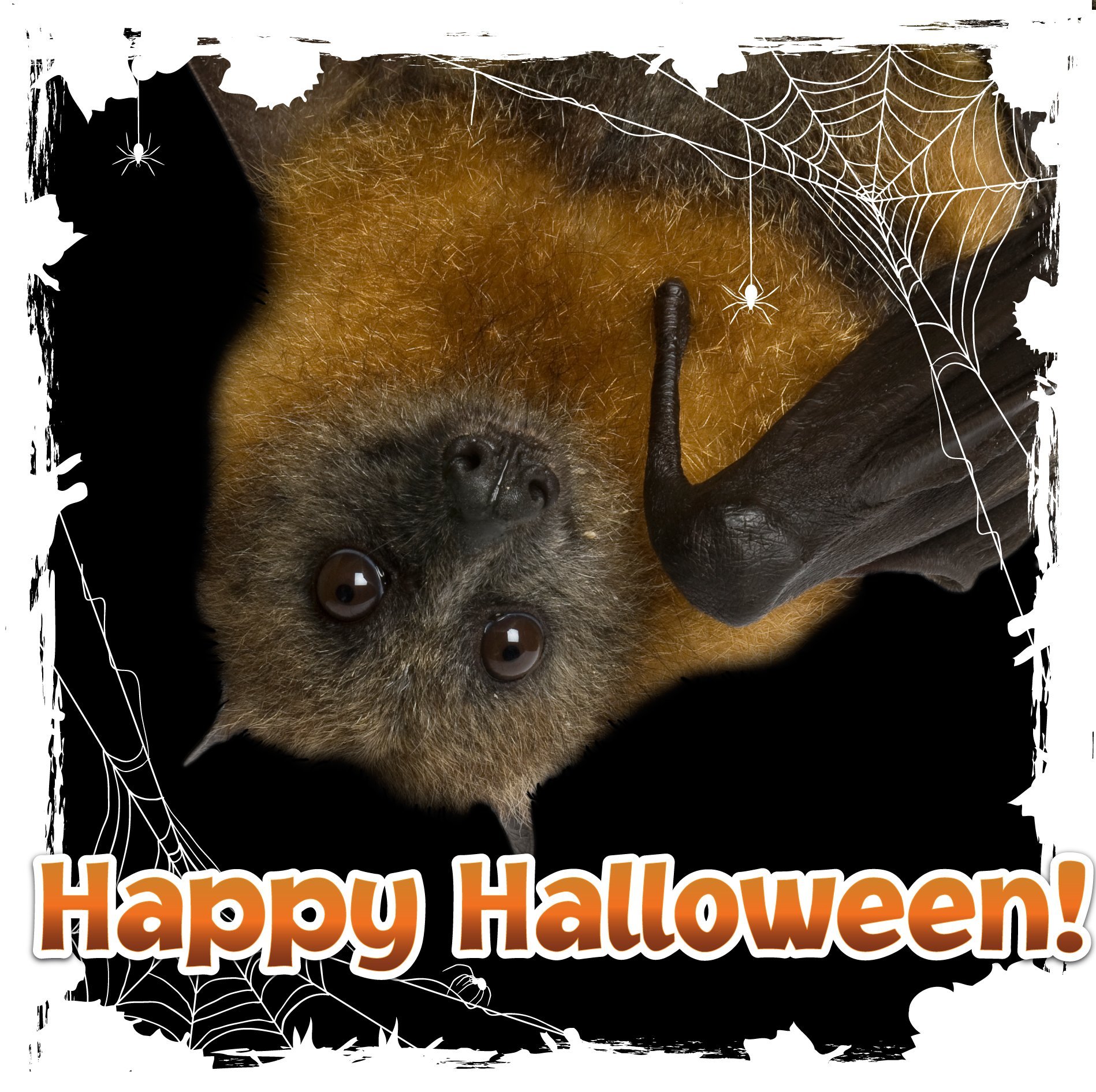This holiday season, lend a helping paw! Show your love for animals with an Earth Rangers Wildlife Adoption! Which cuddly plushie will be on your wish list this year? Click or tap the animals below to check them out in the Earth Rangers Shop.
Eco-Activity: Name that turtle!
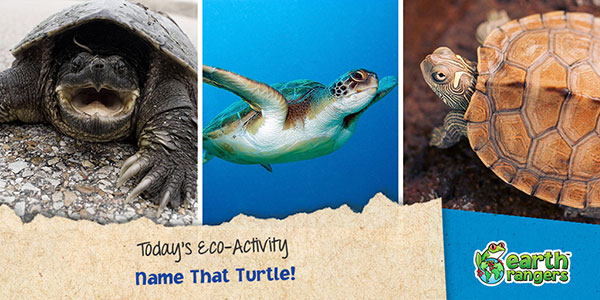
Did you know that there are about 320 different species of turtles? Now that’s A LOT of turtles! For today’s Eco-Activity, we’re going to see how well you know our turtley awesome turtle pals with a quick game of NAME THAT TURTLE!
Instructions:
Below, you’ll find a bunch of turtle pictures and names. It’s your job to try and match them up. Don’t worry, we’ve given you some very helpful hints. Good luck!
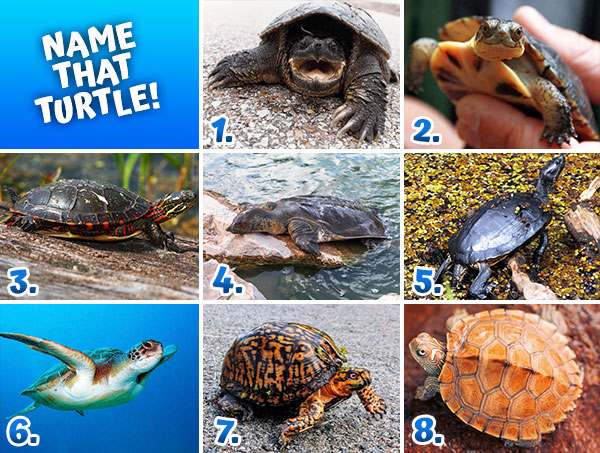
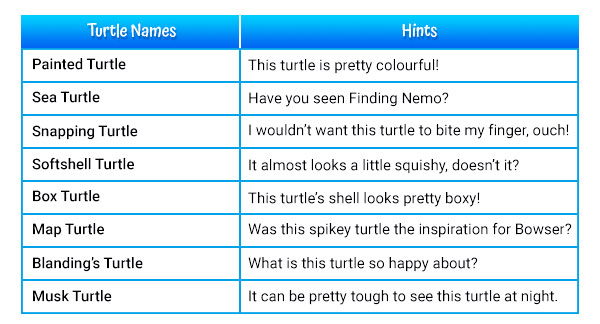
Ok, think you’ve got it? Find out if your answers are right! Challenge a friend or family member to see if they can beat your score.
Want to help midland painted turtles? Purchase a midland painted turtle adoption kit! Each kit sold will support the Nature Conservancy of Canada as they work to restore habitats for animals like turtles!

Pixel Puzzler #6: The Great Reveal
We’ve gotten tons of great guesses on Part 1 of the Pixel Puzzler, and now it’s time for the answer.
Are you ready for the great reveal? Find out if you got it right!
The answer to this Pixel Puzzler is (drum roll please) an Arctic Fox! How did you do? Tell us in the comments!
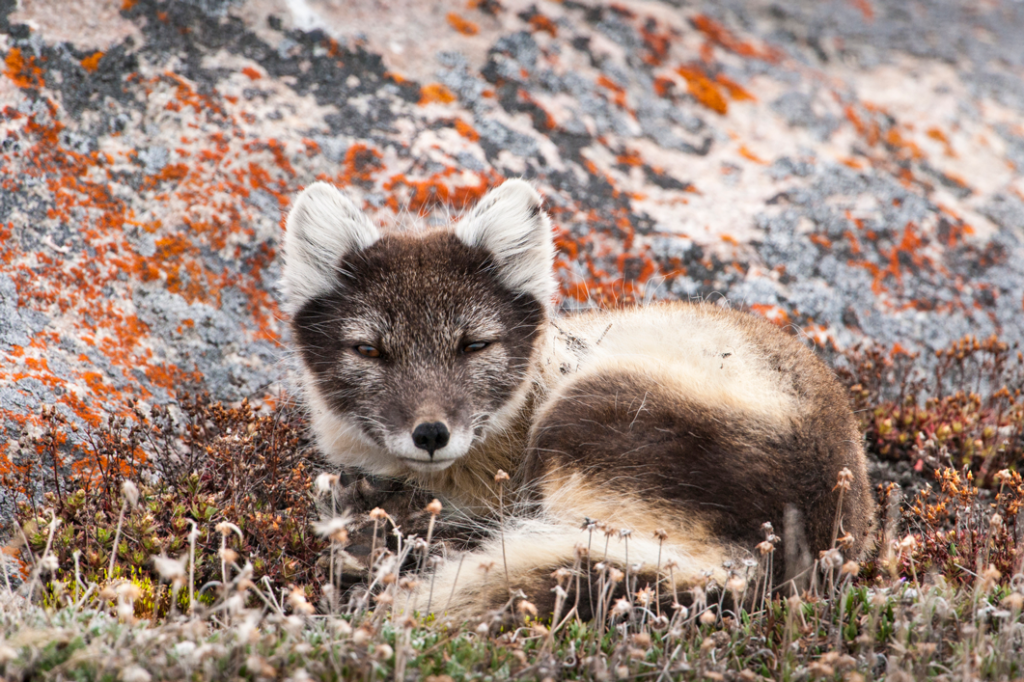
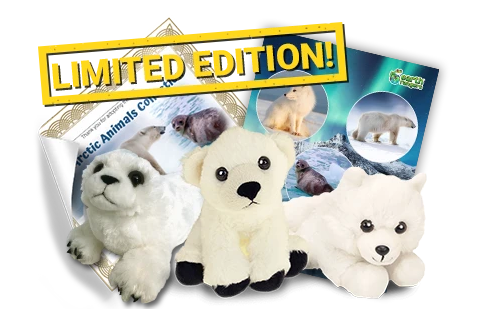
Speaking of Arctic fox, have you seen our brand new holiday package? You can now adopt the Arctic fox as part of the Arctic Animal Collection but just for a limited time! When you do, you’ll get three amazing plushies: an Arctic fox, a polar bear and a ringed seal, which is exclusively available as part of this package!

How do plants and animals handle the cold?
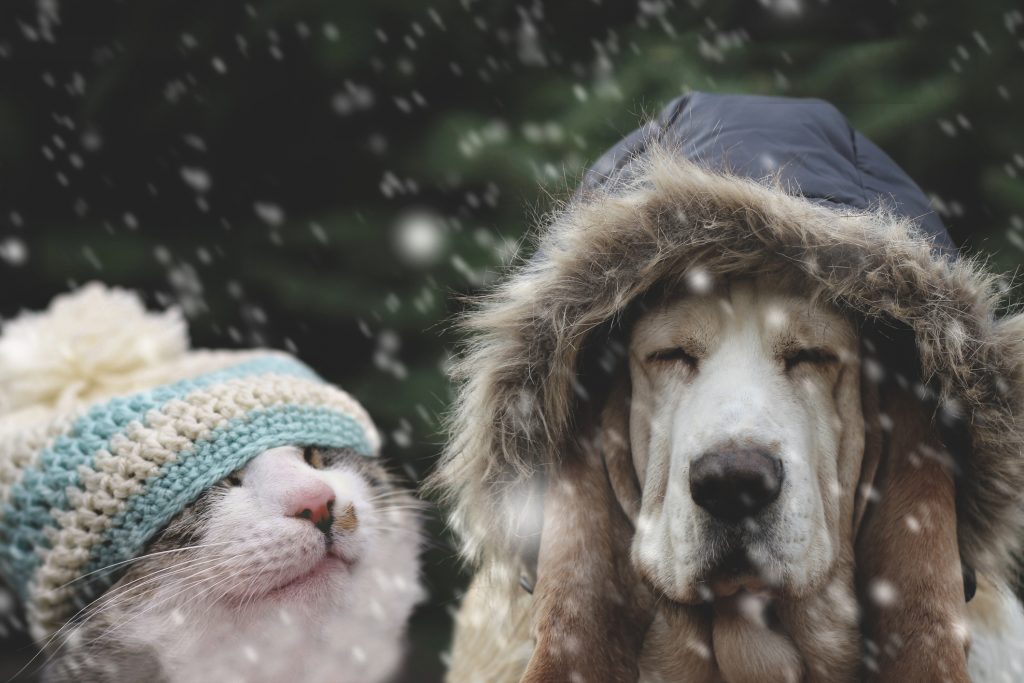
Brrr! Have you noticed that it’s getting colder outside? As the winter weather comes in, are you the type of person who wants to get out and play in the snow, or the type that would rather stay inside with a nice warm cup of hot chocolate? Just like you, different species have different ways to deal with the cold. Check out these examples:
Migration
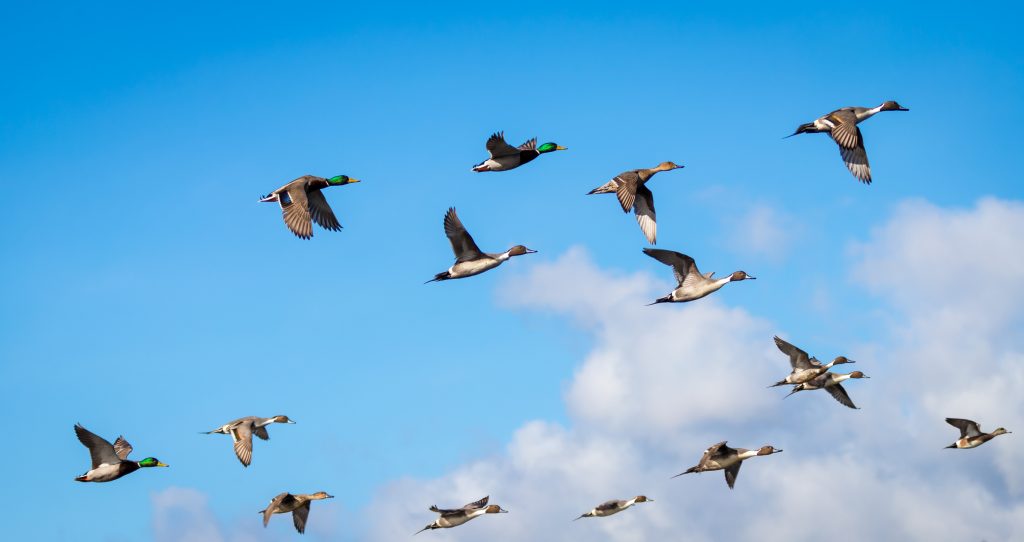
This is for the animals that just don’t want to deal with winter. They head to places with warmer weather and wait out the cold—just like those of us who like to take tropical vacations over the winter break! Many birds are big fans of the winter escape, so if your favourite bird is missing in the winter, this could be why.
Hibernation
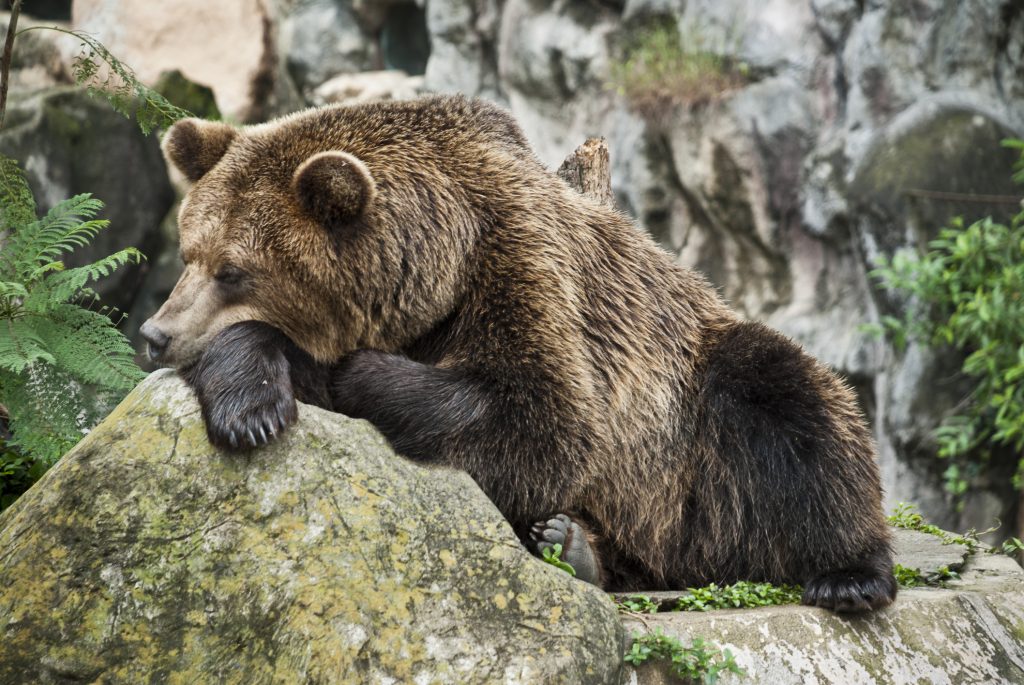
Do you ever get a little extra sleepy in the winter? Does the outside darkness make you yawn? Well, certain animals feel the same way, and these guys take a long snooze until the weather warms up! Some animals, like bears, wake up to stretch once in a while. Other animals, like raccoons, wake up for snacks.
Adaptation
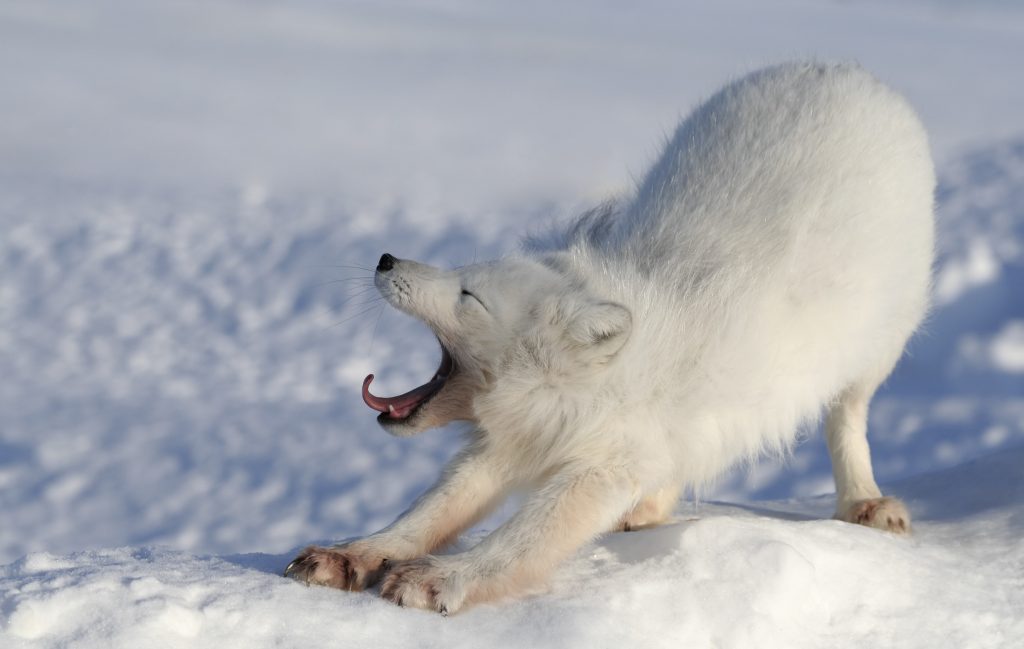
We can’t all travel or sleep through the winter, so many of us adapt to the cold with warm coats, boots and toques! Some animals do this too, including wolves, bison, foxes, and even our pet cats and dogs! They grow nice thick winter coats that protect them from the cold weather! See if you can spot an animal adapting to the cold this winter!
Dormancy
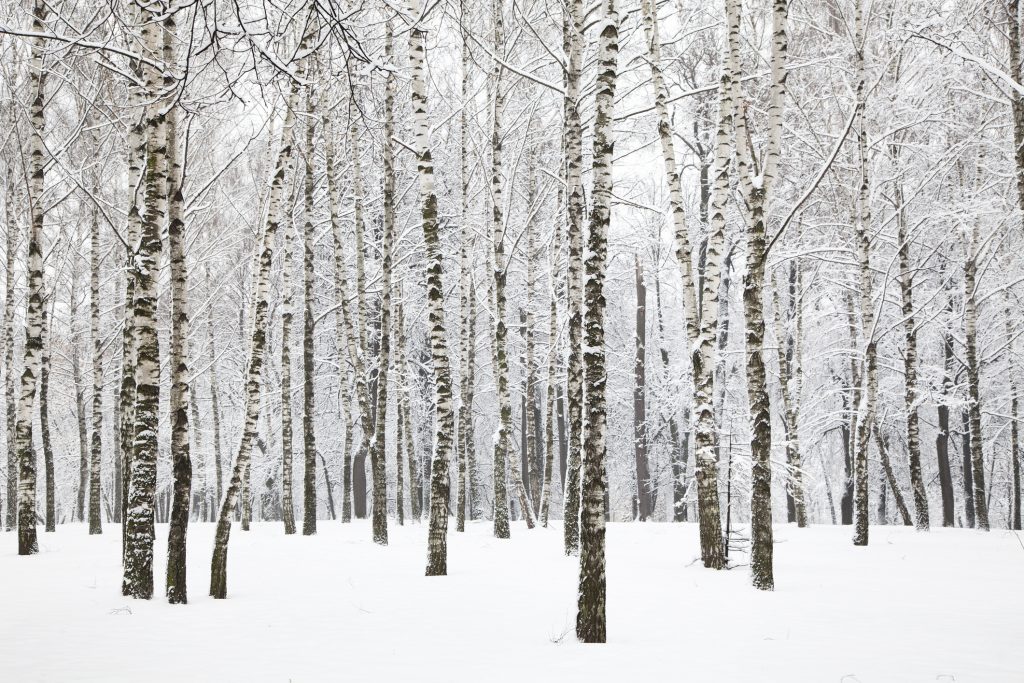
Animals aren’t the only ones that find a way to deal with the cold. Plants do too! Many deciduous trees go dormant in the winter. Just like the way animals hibernate, these trees pretty much take a long sleep. They stop using their energy for food, and rest until the weather is warmer. This is why they don’t need leaves in the winter!
Which is your favourite way to deal with the winter? Let us know in the comments!
Accept the Backyard Biologist Mission in the Earth Rangers app and learn all about the amazing plants and animals around you!


Eco-Activity: It’s time to Act Like an Animal
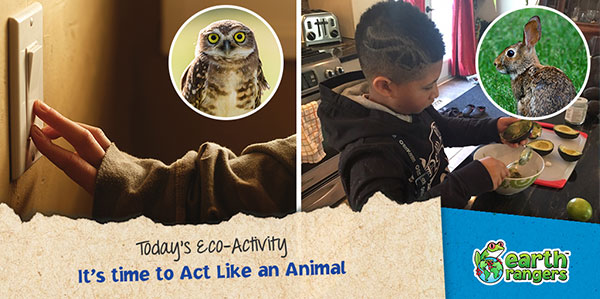
Paw-don me, but we need a couple copycats right meow! Yes, we’re fur-real! For today’s Eco-Activity, we want you to Act Like an Animal and help slow down climate change!
When it comes to being climate-friendly, we can learn a lot from our animal pals! After all, when was the last time you saw a polar bear crank up the heat or a squirrel cut down a tree? They are true climate champions. So why not adopt climate-friendly habits from some of your favourite species? Here’s how:
Step 1: Join the Act Like an Animal Challenge
Visit Project2050.ca or the new section of the Earth Rangers App and join the Challenge!
Join online or on the Earth Rangers App
Step 2: Choose your animal-inspired climate-friendly habits!
You can hoof it like a caribou, do the beluga whale wash, hand it down like a hermit crab, and many more!

Step 3: Log your habits to unlock rewards and complete the community goal!
When you’re finished, log your habits in the app or on Project2050.ca! The more habits you complete; the more rewards you unlock! Plus, every habit logged gets us closer to reaching the community goal!
Step 4: Teamwork makes the dream work!
Encourage your friends and family to adopt these climate-friendly habits with you.
Step 5: Come back and Act Like an Animal every day!
Don’t forget to log your habits each time you complete them. The more you Act Like an Animal, the more you help slow down climate change!
The Act Like an Animal Challenge is part of Earth Rangers’ new Project 2050: Climate-friendly habits to change the world. Team up with other kids from across Canada and help protect our planet!
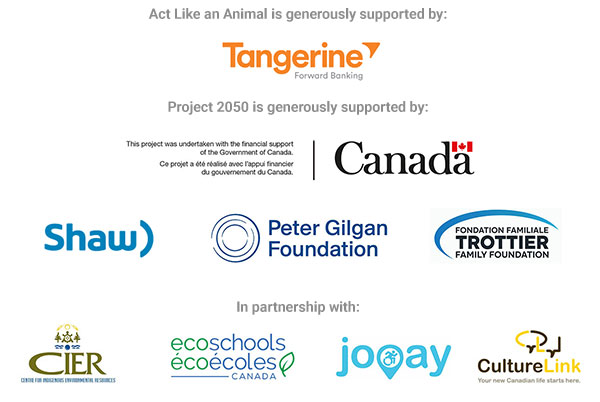
So, did we break the world record?

We broke the official GUINNESS WORLD RECORDS® title for the longest chain of paper snowflakes! Actually, we didn’t just break it—we SMASHED IT! The previous record was 214 m, and our chain was *drum roll please* 403 m, and had over 2,200 snowflakes! Thank you to everyone who participated; this record belongs to you.
The snowflake chain is a symbol of the love and passion kids like YOU have for nature and all of the animals that call this planet home. It really shows us what we can do when we all work together. Which makes it the perfect way to launch a brand new Earth Rangers Program that’s all about working together to accomplish some big goals!
Introducing Project 2050: Climate-friendly habits to change the world!

Have you seen this brand new section of the Earth Rangers App? You can join Challenges along with other Earth Rangers members across Canada! By practising and logging your climate-friendly habits, you’ll help reduce greenhouse gasses and get us closer to the Challenge goal. You’ll also unlock some awesome rewards along the way!
The first Challenge is to Act Like an Animal by learning and doing some climate-friendly habits straight from our friends in the animal kingdom—like snacking like a rabbit, planting seeds like a squirrel and layering up like a polar bear.
Let’s use the power of teamwork to make a real difference for the planet with Project 2050. We can’t wait to see what more we will accomplish together!
Accept the Challenge in the Earth Rangers App and start Acting Like an Animal!
Project 2050 is generously supported by:
Caption This! What’s This Fox Pup Thinking?
We need your help! This young fox is trying to tell us something but we can’t figure it out! Do you know what it’s thinking?
See if you can come up with the best caption!
Post your ideas in the comments!
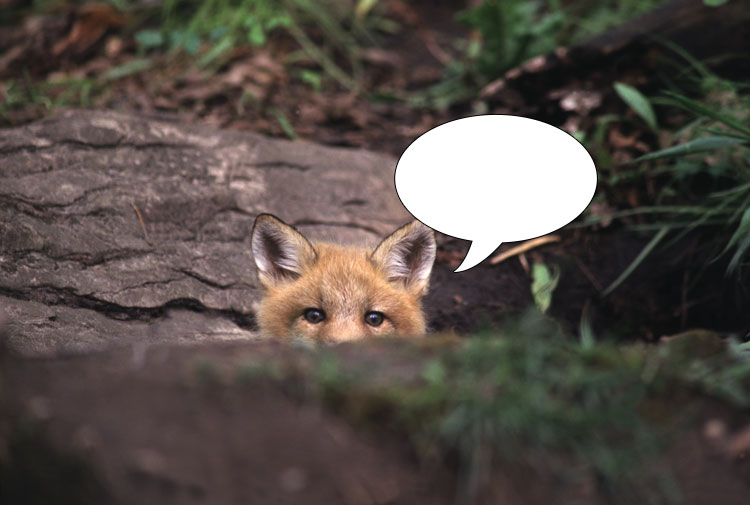
Looking for more fun stuff? Check out our other captions, try and figure out a pixel puzzler, take a quiz or watch a cool video!
Eco-Activity: Make a pumpkin bird feeder!
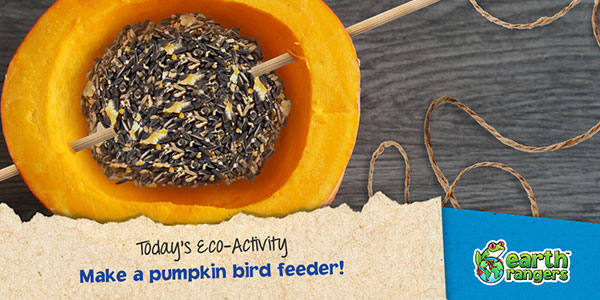
Now that Halloween is over, what are you doing with your jack-o’-lantern? Don’t just throw it away; turn it into something new! For today’s Eco-Activity, we’ll show you how to make a pumpkin bird feeder for our flying friends!

Instructions:
1. Cut your jack-o’-lantern in half.
2. To make the first perch, push one of the sticks through the wall of the pumpkin, leaving enough room for a bird to stand on.
3. To make the second perch, repeat step 2 but on the opposite side of the pumpkin.
4. Put your two ropes together and tie a knot in the middle.
5. Place your pumpkin over top of the knot and spread the rope out evenly. When you pick up the rope, it should cradle the pumpkin.
6. Put the tack through the knot in the rope and into the pumpkin to make sure it stays in place.
7. Decide where you want to hang your bird feeder. It could be off a tree branch or even a hook outside. Hang your birdfeeder up by tying the ends of the rope together.
8. Fill the pumpkin with bird seed and see who stops by!

Eco-Activity: Become a Junior Polar bear Researcher!
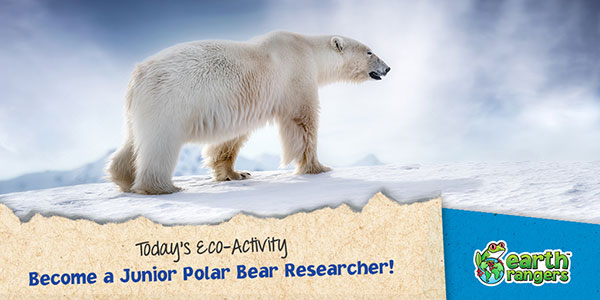
Have you ever wanted to see what it’s like to be a polar bear researcher? For today’s Eco-Activity, that’s exactly what you’ll be doing. Buckle up, you’ve got some polar bears to study!
First we need to travel to Hudson’s Bay. Don’t worry, it’s just through your computer. There you’ll find seven polar bears roaming around, and it’s your job to learn as much as you can about them. Each bear is wearing a tracking collar so you can see where they’ve gone, but enough chit chat! You’ve got some important information to collect!
Instructions
1. Click here to meet the polar bears.
2. Check out each of the bears to find out how far they travelled, how old they are and other important information
3. Record your data by answering the questions below!
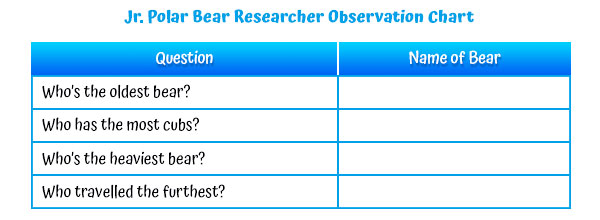
4. Double check your answers and when you’re done, don’t hesitate to show off your new knowledge to your friends.
Being a real polar bear researcher is a lot of work. Just ask our partner, Larissa Thelin from the University of Alberta! She’s working hard to learn how climate change will affect polar bears in the Davis Strait—that’s the area between Baffin Island and Greenland! You can help support her work with an Earth Rangers Wildlife Adoption. Check them out here!




